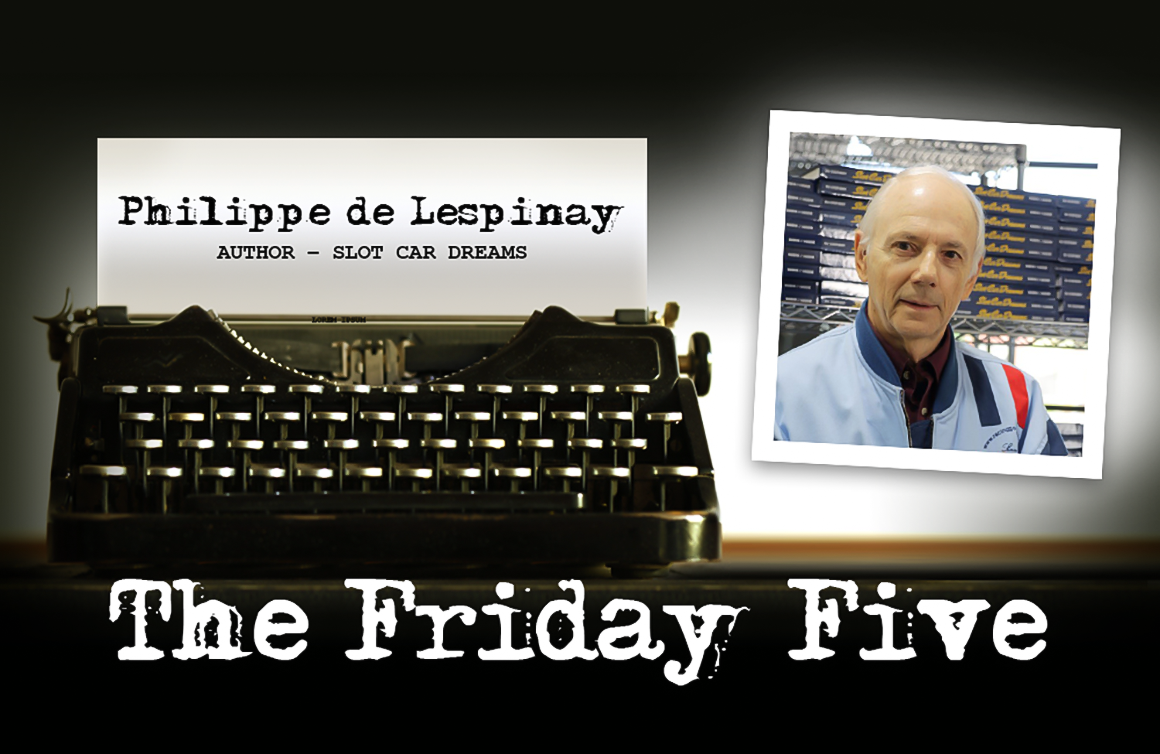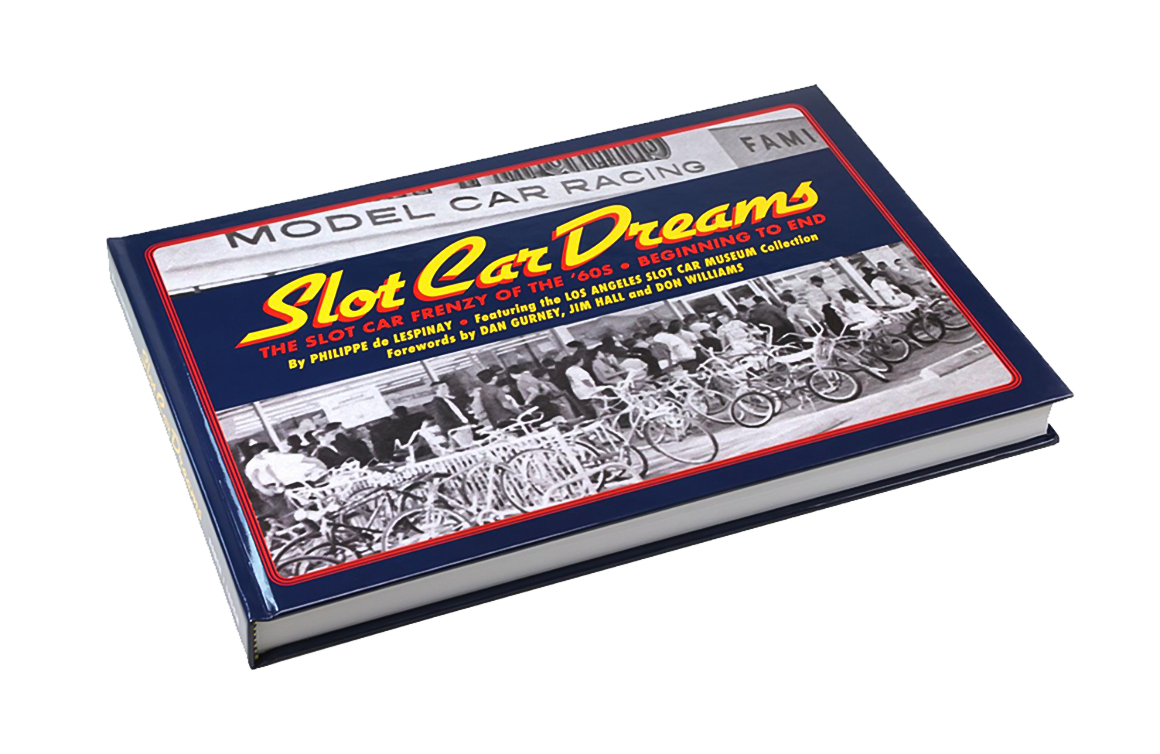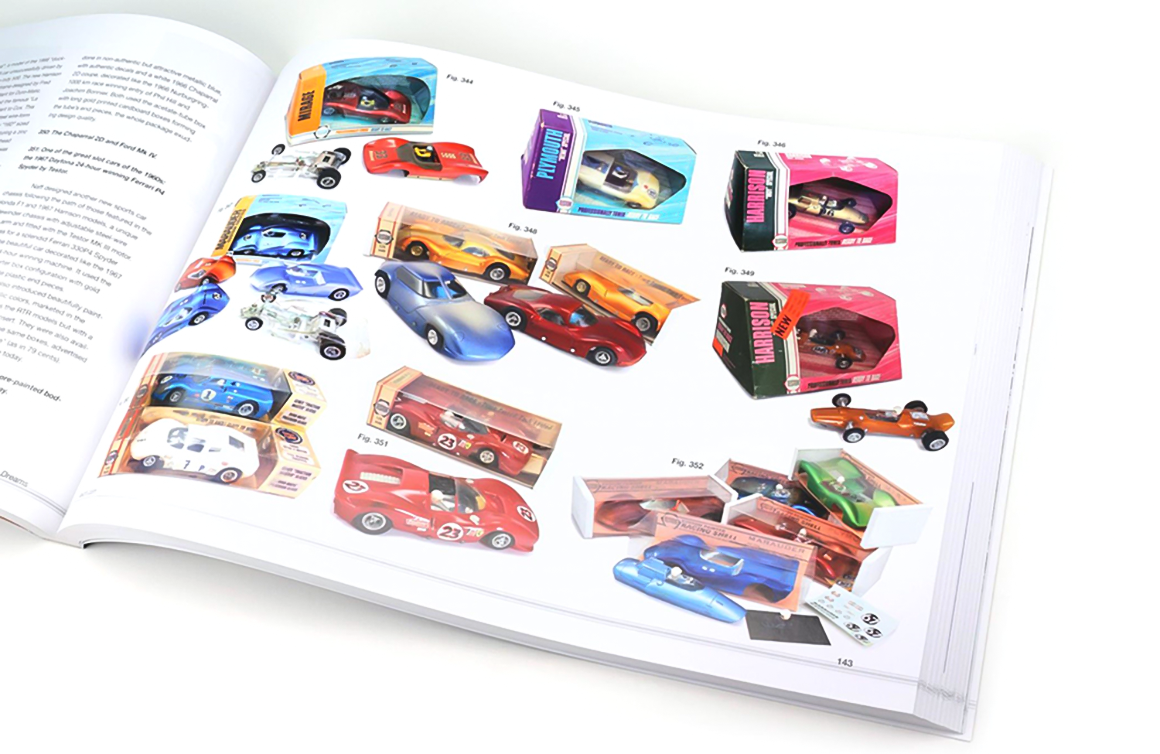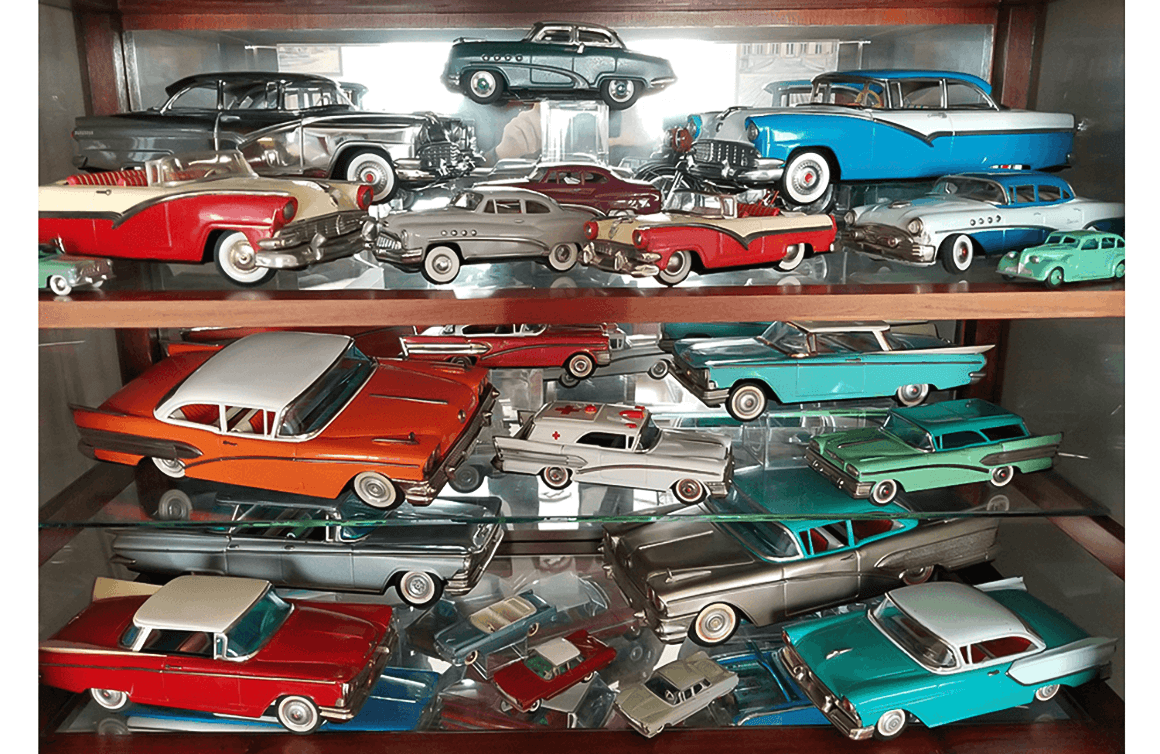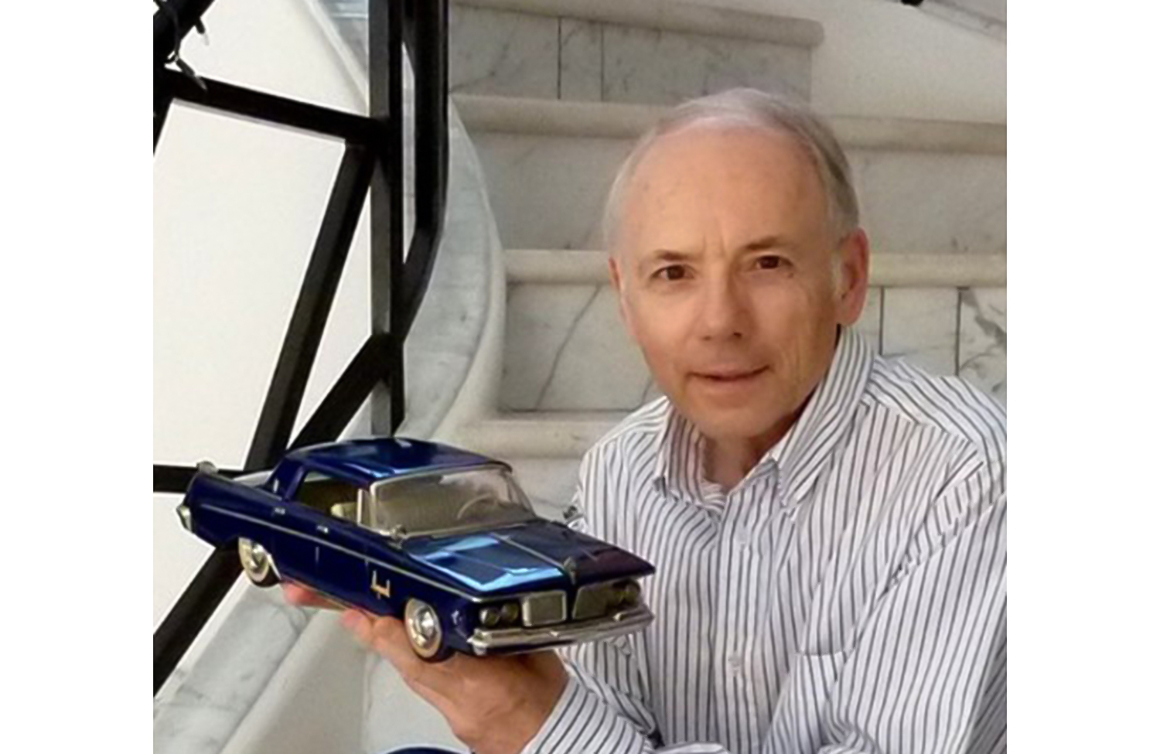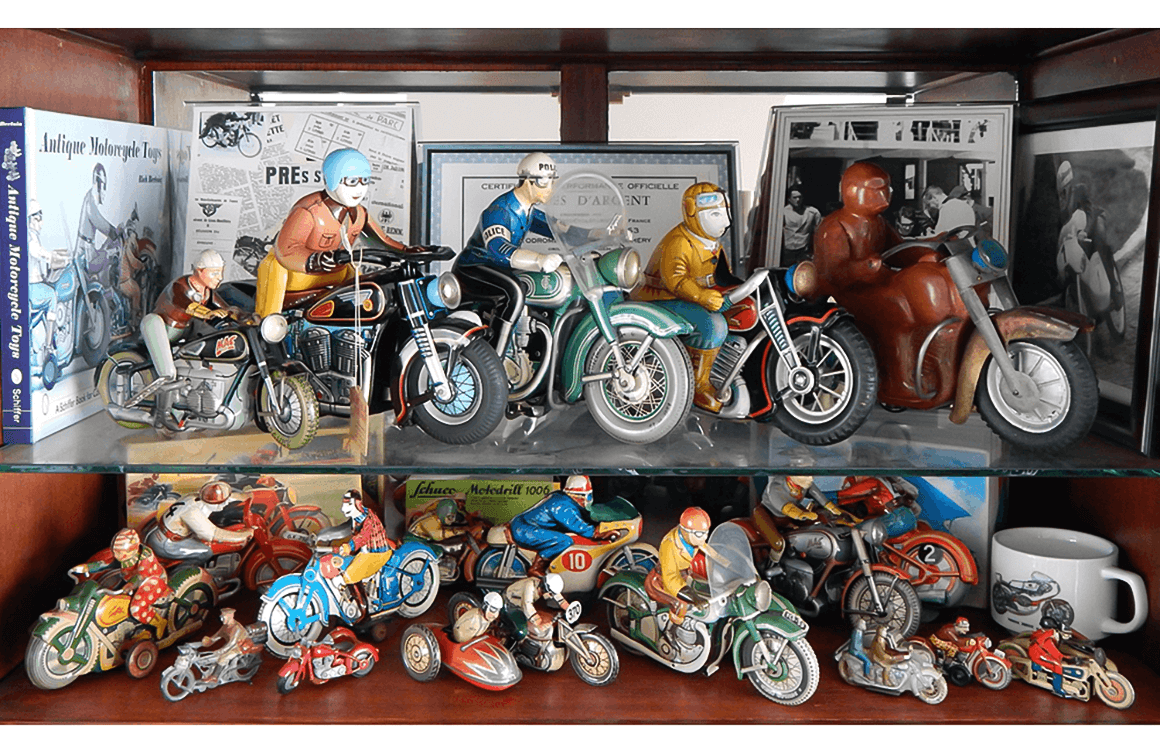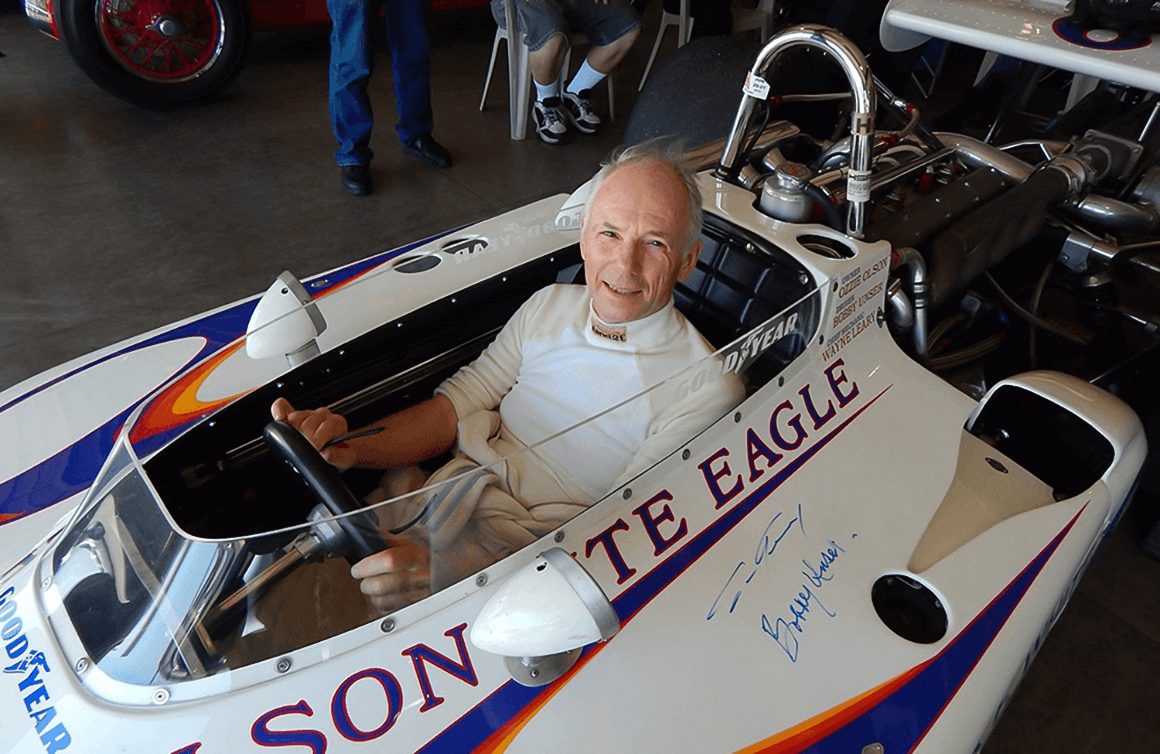You started your career designing and racing Grand Prix motorcycles. How did that lead to designing toy cars?
As I child, I always loved toys but I could not buy any, as I never had an “allowance”. I was born to a poor family and saw the fabulous toy cars, aircraft, and ships some of my friends owned. Fortunately, I was never a jealous or envious person — instead, I built my own from cardboard and wood.
As a young man, I was hired by the French plastic model kit maker, Heller, as a designer. There, I engineered kits of model aircraft and cars, some of which are still being produced today. Once in the USA, I worked for a consulting company where I invented magnetic traction for slot cars and then moved on to become part of the research and development team at Cox Hobbies. It’s there that I designed the world’s first production slot car with a traction magnet. In between, I began racing 1/24 scale slot cars at the pro level and was successful, winning big races, designing new chassis and more aerodynamic bodies. I built all my cars and introduced new technologies, including what became the modern slot car controller.
The role of manager of the research and development team at Cox was my last job for a company. I created my own company where I designed and manufactured racing wheels, some of them for Formula 1 and World Endurance Championship cars that won races and championships. My company also imported auto-racing drivers’ equipment, suits, helmets, gloves, etc. I sold the company in 1995.

How did working with toy cars lead to a career in the racing industry?
While still living in Europe, I raced motorcycles. I started in low-cost national classes and eventually all the way to Grand Prix level. But, money was tight so I partially built my own racing bikes. After three years in the USA, I returned to racing and was quite successful in the classes I entered. I again built my own bikes, one of which gained fame in various publications. I recovered its ownership and am now restoring it.
In 1977, I was hired by the Italian Morbidelli company — which had just won three world championships — to generate new ideas and experiment with new technologies. I could not stay with Morbidelli too long, as I had a business to run in California. In the process, I inherited one of their racing bikes, which I am now restoring.

Now retired from your career, you build custom slot cars. What fuels your passion for that hobby?
I got bored after selling my business, so I opened a store selling vintage slot cars from the 1960s. I travelled all over the USA and abroad to purchase entire collections. I met Scott Bader, a businessman from Los Angeles. His ambition was to create the finest collection of vintage slot cars, and an actual museum, and he asked for my help. He bought my company and hired me to build the collection and write the ultimate book about the “classic era” of slot racing in America while he constructed the most amazing building that contains full-size racing cars, motorcycles, and go-karts along with a museum for both slot cars and plastic model kits.
Meanwhile, I returned to racing slot cars in the newly established “retro racing” classes. I did well, again introducing new “ultra-lightweight” ideas in the “retro pro” class. It took too much of my time so I ended that. I now only restore important historic racing cars for the museum as well as keeping track of the huge inventory of cars and parts, and making acquisitions and recommendations to improve the collection. Incredibly, we still find things that only a few had ever seen.

Tell us about your collection of antique toy cars.
In 1977, I began collecting old toy cars, mostly 1/43 scale Dinkies and the like.
In 1982, during a trip to Switzerland, I discovered something I had never seen: the large and magnificent Japanese tinplate toys of American cars produced by Marusan — Ichiko, ATC, Yonezawa, and the likes. I got hooked. In 1989, I divested most of my 1/43 scale die-cast cars and began acquiring more and more of these marvellous Japanese toys and some German tin cars. I now have a few hundreds of these and am missing only a few examples of especially rare cars to complete my collection.
I have effectively run out of display space, so nothing is so urgent at this time. Over the years, I have assembled a collection of pre-war Tootsietoy cars and aircraft, which I consider some of the finest toys ever made in America, especially during the depression years. I only acquire pristine or near-mint examples, and abhor “repaints” or manipulated examples. Tootsietoy (Dowst Manufacturing Co. in Chicago) introduced Zamak in die-cast toys, a significant progress in metallurgy.

You authored a book titled Slot Car Dreams released in 2021. What inspired you to preserve slot car history in this manner?
Collecting vintage slot cars has become a hobby in itself and there is a whole new category of collectors discovering the older models. Many millions of cars and parts were produced in the classic era and thousands have survived, many unused in their original boxes.
The previously written publications about these toys lack a lot of information and are often not factual. Also, no one had addressed the human and professional sides of slot car racing and hardly ever showed pictures of models in their original boxes. Scott Bader wanted a true “bible” of the classic era. It took me over 10 years to get it right, doing intense research and reducing speculation to a minimum. We decided that the material we had alongside the stories and testimonies was simply too much for a printed volume. Instead, we decided on a world’s first: adding text and pictures on an interactive, dynamic website. We should patent it!
The book addresses in great detail subjects never described before in virtually all such toy car books — subjects such as chassis, bodies, motors, the people involved, prototypes, and a chapter about the evolution of professional racing and the people involved. The critics so far have been very positive and it has sold well despite very limited distribution.

Slot Car Dreams is available through the Electric Dreams website.

